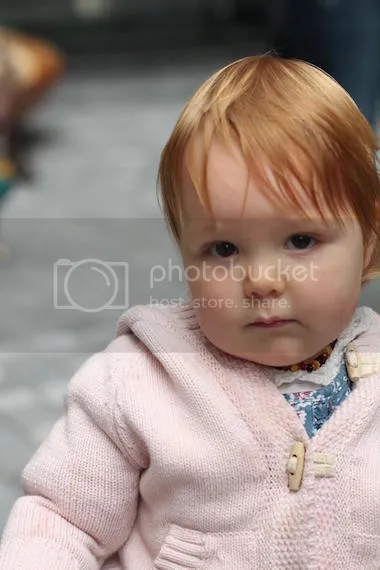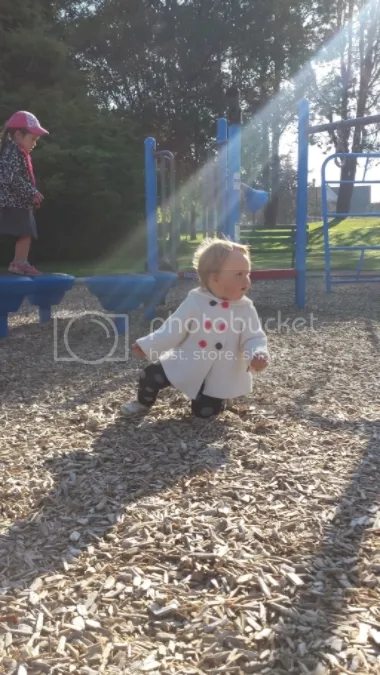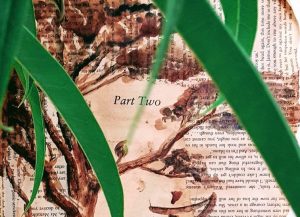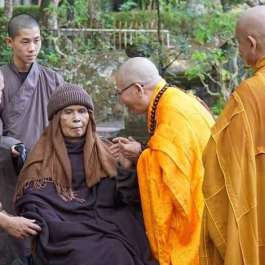
When I was pregnant with Adelaide, many parents would congratulate me and offer up the wise advice to really enjoy the first years of parenthood. They seemed to always make it a point to mention that they go by too fast. During the first year, although the days were sometimes long and spacious, the weeks did seem to fly by, and within these last few months Adelaide has rapidly made the shift from being a baby to becoming a toddler. In the process, she has learned new skills at what seems like lightning speed, going from cautiously standing without support to taking a few steps to walking, all in a matter of weeks. With her newfound ability to walk independently, she has begun to make all kinds of discoveries about the environment around her—everything from the dog’s water bowl to the trash can, the kitchen oven, and the various shelves at her height around the house that hold interesting toys and other objects for her to explore. These early toddler months are full of healthy investigation and begin a new chapter in how we as parents relate to limits and boundaries, which can be both challenging and rewarding at the same time.
I used to teach a program for teachers on classroom management, which focused mainly on creating clear and consistent boundaries in the classroom. Prior to beginning the course, I would often observe the teachers to see what skills and approaches they were applying in the classroom. Time and again, I found that teachers who struggled with classroom management had unclear boundaries, used negative rather than positive language, and often used vague and abstract terms to guide their students toward appropriate classroom behavior. I’m finding that as Adelaide moves into toddlerhood, these same three areas are important in the home environment as well.

Personally, I haven’t always found boundaries and discipline easy. It wasn’t until undertaking a traditional Buddhist three-year retreat that I began to really enjoy and appreciate the benefits of clear boundaries and the discipline that comes with maintaining them. The outermost boundary was the physical border of the spacious retreat property, nestled in a remote mountain valley near the Border Ranges National Park in New South Wales, Australia. It was an amazingly beautiful site, with eucalyptus forests and open fields where wild wallabies ranged freely on the plentiful grass. Before the retreat, we also created a personal boundary agreement with ourselves, guided by the advice “not to deceive yourself and not to harm others.” The boundary each retreatant created to support that advice was an individual choice, but once we had made the boundary we were supposed to maintain it for the entire three years. The inner boundary was the commitment to the daily schedule of meditation and practice, free from worldly engagement and activity, while the innermost practice was to strive to maintain awareness consistently through the days and nights of the retreat.
During the first year of the retreat, it was very hard to maintain all the boundaries. It took an inner discipline not to shift the schedule when boredom arose—never in my life had I been so actively engaged in trying my best to maintain a routine day in and day out without any change for that long, and it seemed extremely boring and difficult! But sometime in the second year there was a shift in my relationship with the boundary, and I began to deeply relax into the schedule. I no longer had to think about what I was going to do, or when. The uncertainty of what to do next, and the multitude of choices around what I could potentially do, that had previously existed in my life held a subtle level of anxiety that had been previously unapparent, and surrendering to the sameness of the day-to-day living proved profoundly freeing.

author
From my experience as a teacher of young children, I believe it is the same for them—once they know the limits and boundaries of what is acceptable and what is not, they become very relaxed and joyful, very content and happy, as they have a clear sense of how to behave. Drawing clear and consistent boundaries is something my husband and I have been working on together for Adelaide. At this stage, the boundaries are primarily based on safety. I try to limit what we have to say “no” to so that we avoid getting into the habit of having constantly to say “no,” yet there are a few things that are definitely a “no” kind of situation, like the wood-burning and kitchen stoves. But I try to use positive language rather than “no”—for example, when pointing to the oven dials I say, “This is for mama and dada; you can play with this,” and redirect her to a drawer with kitchen utensils and bowls that are safe for her to explore. Consistently drawing this boundary lets her know that it’s always the case that she can’t play with the stove. If I had said simply, “No, it’s not safe,” as Adelaide probably doesn’t know an abstract word like “safe” she would have needed to continue to explore the dials until she got more clues as to what I meant—and thus the battle would begin. I have found that this is where many parents and teachers get caught and misinterpret as defiance the child’s need to explore in order to gain more information about what the caregiver or parent is trying to communicate.
At the same time, encouragement can also become more intentional and specific. Abstract expressions like “that’s good” can be confusing for toddlers, and it can be much more helpful to express exactly what is “good,” for example saying “nice walking,” “that is a nice inside voice you are using,” or “your hands are being so gentle.” These all give the child clear messages about what good behavior actually is, and help draw attention to the behavior we want to encourage rather than focusing on the negative, as in “don’t run,” “be quiet,” or “don’t push.”
These are simple and subtle shifts that make a profound difference for the child, and much like in a retreat situation, the child will begin to relax and feel a sense of joy as they discover how to appropriately engage with their world and the people within it.











